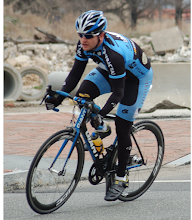It was more efficient and effective in almost every way I could want.
In the last month, I've started training with GPS. It's not a replacement for training with power in any way. Instead, it's giving me another way to look at my training. It combines three pieces of information:
- Where I ride
- Segments of road that someone has marked as being worth tracking
- My performance on that segment (both against others and against myself)
Training with power requires a power meter and software to analyze the data, so it can get a bit expensive. All training with GPS requires is a modern smart phone. Of course, with GPS-enabled bike computers, you can also track you speed, heart rate and power as well as the mapping data.
There are quite a few benefits to training with a GPS.
First, cyclists are seriously competitive. Seeing that someone else did better on a road that I thought I did well on gives me an incentive to try to beat them, especially if it's a road that I ride a lot and feel that I should be the best rider on it. The system tracks all of the roads on which you have the best time and notifies you any time someone beats you. For me, I've found a tendency towards short steep climbs (less than 4 minutes) or longer, flatter segments (about 5 minutes or so).
Second, it captures the performance data of everyone who rides on each segment. I don't just see their speed. I see how much power it took them to get it. Now I have something to aim for.
Third, it lets me compare against my own previous times. It shows me every time that I've ridden that segment (with a GPS-enabled device) and how my performances compare. Before long, you start to see the patterns of how you do when you are just cruising along vs. how you do when you are really pushing.
Last, and perhaps best, you can browse a map to find segments that others have marked. It gives you ideas of places to ride near the areas that you already ride so you can try out new and different roads (and of course, have a target speed/time on them!!)
Would I train with GPS and not power? Not if I could help it. I look at GPS as a great supplement to power, not as a replacement.
